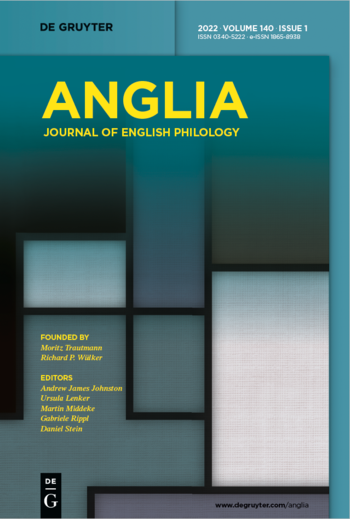Constructing the Poet's 'Now': 'Deor's' Modernist Temporalities
Andrew James Johnston – 2022
In comparison with other Old English poems, Deor is unusual both for its stanzaic structure and its refrain. Furthermore, close to the end of the poem, the narrative voice shifts from one that appears to be comfortably heterodiegetic to a homodiegetic voice giving expression to a deep sense of loss. It is through that sense of loss, the article claims, that we witness the construction of an anguished sense of the 'Now'. This article investigates the poem's remarkable narrative, aesthetic and temporal features through the prism of a 'global modernisms/global modernities'-approach as has been developed in the context of the world literature debate. The central argument unfolding here is that by opening itself up to the notion of an unknown future, Deor stages a complex, 'modern' entanglement of different temporalities. Deor's specific modernism consists in the way in which it performs aesthetically, through an act of poetry, the mutually constitutive relationality of a past and a radical present.
How to cite:
Andrew James Johnston. "Constructing the Poet's 'Now': Deor's Modernist Temporalities." Anglia. Journal of English Philology 140, no. 1 (2022): 2–18. https://doi.org/10.1515/ang-2022-0002.
